The homomorphic encryption (FHE) technology developed by Zama allows developers to perform operations on data without decrypting it, meaning without exposing it. What does this mean?
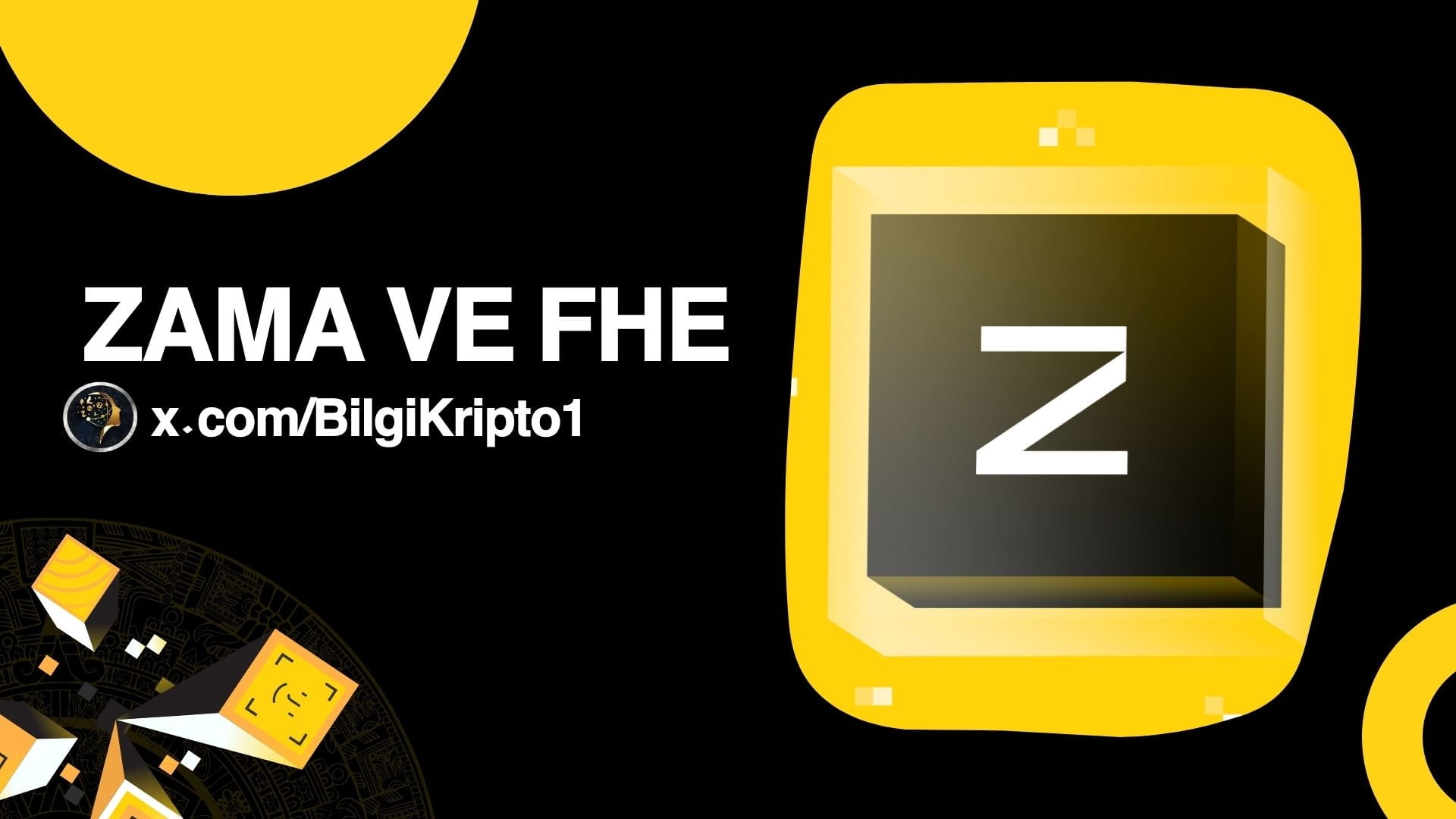
Normally, to process a piece of data, the encryption of that data must be decrypted. For instance, if the balance information in a bank account is encrypted, to learn the balance, the encryption must first be decrypted, which poses a risk of exposing the data.
Thanks to Zama's technology, operations can be performed on data while it is encrypted. Thus, the transactions made on the blockchain remain confidential and are guaranteed to be executed correctly.
Private Smart Contracts: Privacy and Security Together
Zama's tools enable the creation of private smart contracts even on public and accessible blockchains (like Ethereum). In other words, while some users can see transaction details, others cannot access this data.
For example; consider a cryptocurrency transfer. Normally, everyone can see the transaction amount. With Zama, this transaction amount can only be seen by the parties involved in the transaction, others cannot see it.
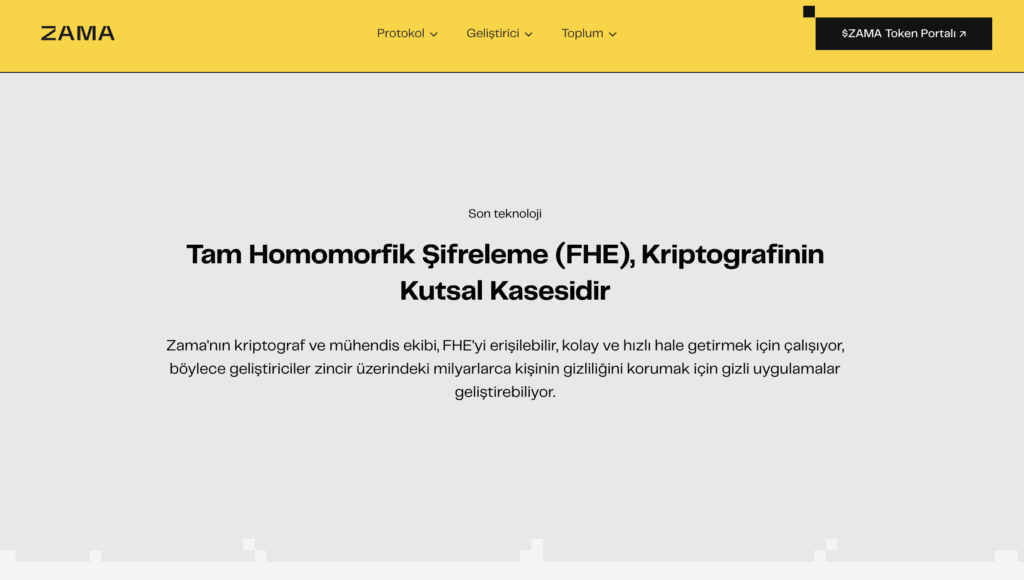
Privacy Issue in Blockchain and Zama's Solution
One of the main advantages of blockchain technology is that everyone can verify transactions, thus ensuring transparency. However, this transparency sometimes compromises privacy.
For example, it is not possible for bank account information, identity information, and voting data to be publicly available. Without privacy here, blockchain technology cannot become widespread.
Zama Confidential Blockchain Protocol (Zama Protocol) was developed to solve this problem.
Transaction data is kept encrypted from start to finish. This means that neither the node operators holding the transaction details nor any other person can see the data.
Privacy does not conflict with transaction verifiability. Everyone can verify that the transaction was carried out according to the rules.
Developers can program who can see what data in smart contracts.
This provides both privacy and security simultaneously on the blockchain.
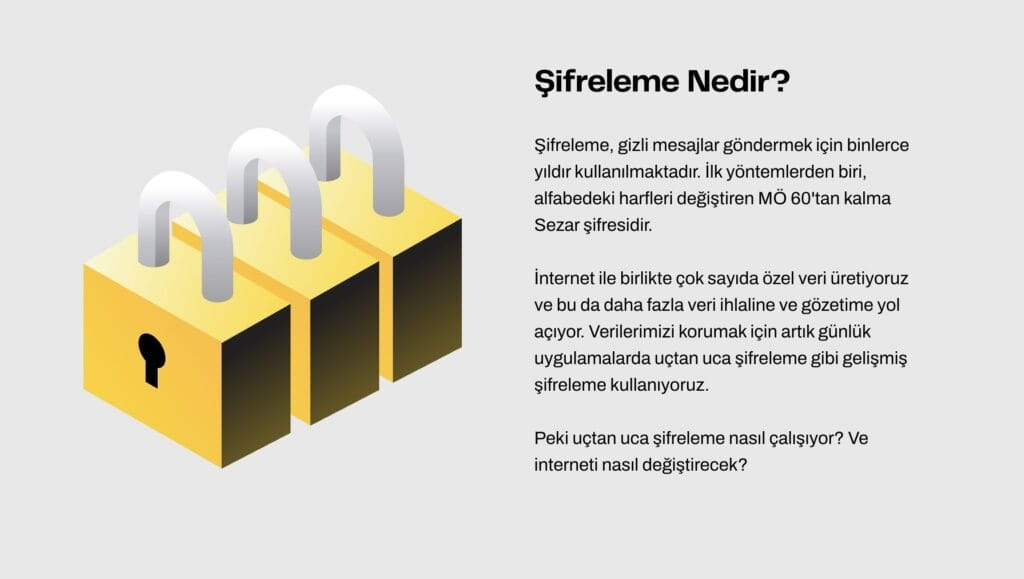
What is FHE Technology? Why is it Considered the 'Holy Grail'?
FHE (Fully Homomorphic Encryption) is one of the rare technologies that allow operations on encrypted data.
For example, your bank is stored in an encrypted form. Thanks to FHE, the bank system can aggregate, extract, or verify the amount of money in your account without decrypting the password.
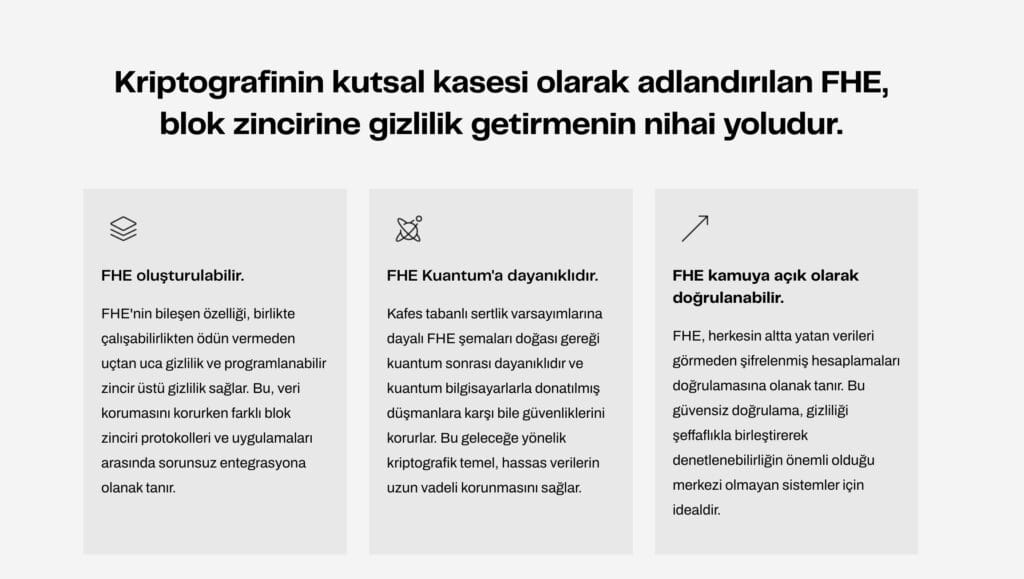
This technology was very slow and difficult to use 5 years ago, but Zama's team has accelerated it significantly in the last 5 years. Now it can be used with common programming languages like Python or Solidity, and it works much faster.
Additionally, this technology has been developed in a way that makes it impossible for quantum computers to break, thus providing robust security for the future.
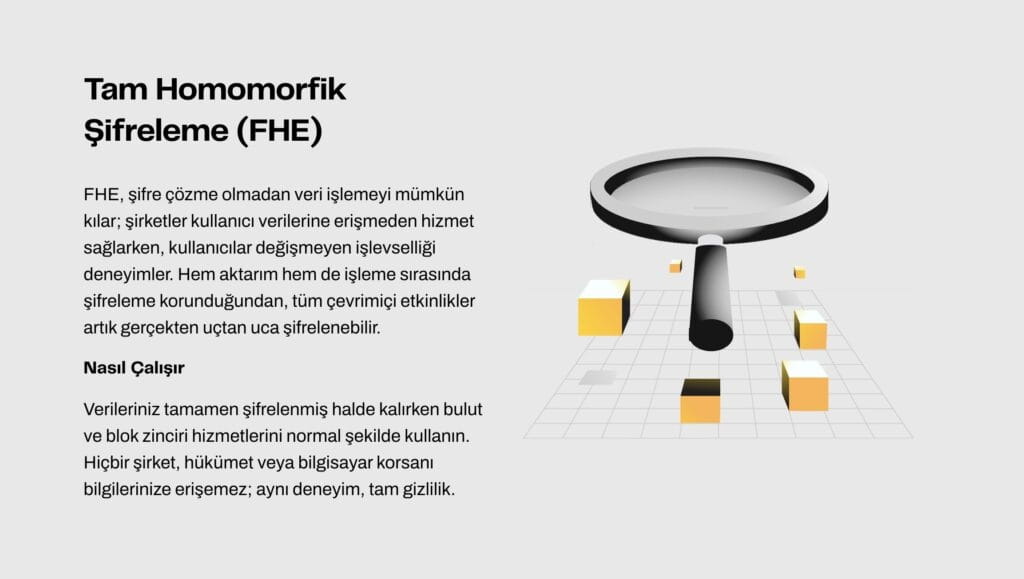
The Zama Protocol Uses Not Only FHE but Also Other Powerful Technologies
Multi-Party Computation (MPC): The encryption keys are managed collectively by multiple parties rather than a single person. Thus, no one can access critical data alone. This system enhances the security and decentralization of the network.
Zero-Knowledge Proofs (ZK): It allows proving that a transaction was carried out correctly without revealing transaction details. For example, a person can keep the information confidential while proving that the transaction complies with the rules.
How Does the Zama Protocol Work?
Zama is not a new blockchain (Layer 1 or Layer 2). It is added as a privacy layer on top of existing chains. This means you continue to use chains like Ethereum or Solana, but your transaction data remains confidential.
For example, you don't need to switch to a new chain to run confidential smart contracts on Ethereum.
Roadmap of the Zama Protocol
Testnet: Currently, everyone can develop and experiment with confidential dapps (decentralized apps).
Ethereum Mainnet (Q4 2025): The official privacy era will begin on Ethereum. Initially, Zama-approved applications will become available.
Token and Other Chains (End of 2025): The $ZAMA token will be launched and the protocol will expand to other EVM-compatible chains.
Solana Support (2026): In the next phase, different blockchains like Solana will also be supported.
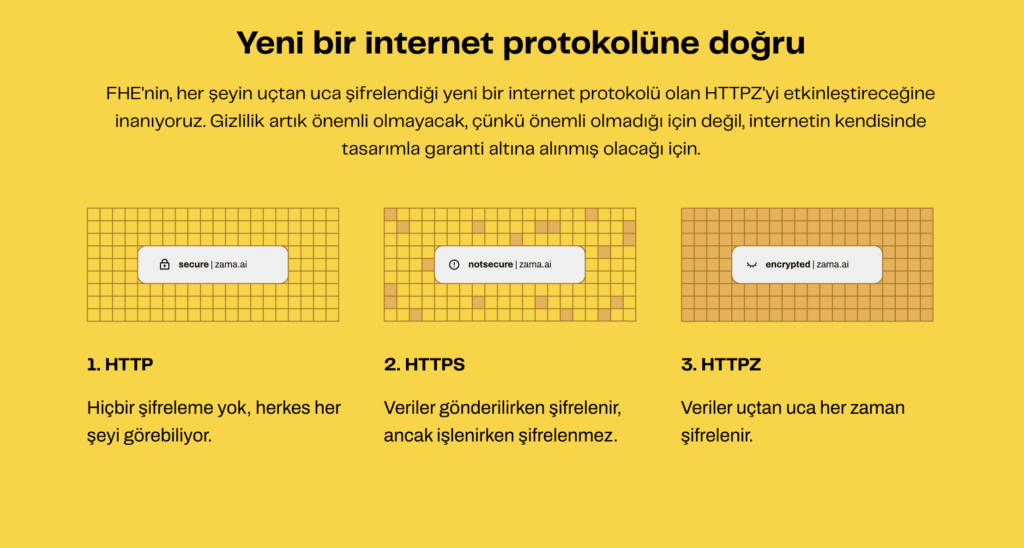
What Applications Are Possible with the Zama Protocol?
Financial Transactions and Payments:
For example, your stable coin transactions can remain completely confidential.
Transfer amounts and balances can only be seen by the relevant parties.
Banks and financial institutions can operate without exposing private information.
Tokenization and Real World Assets (RWA):
It is possible to buy and sell financial assets such as stocks and bonds secretly on the blockchain.
KYC/AML controls can be performed directly within the contracts.
Confidential DeFi Transactions:
Users can keep the amount of assets they own confidential.
Bots' ability to predict transactions in advance and cause harm is prevented.
Applications such as private lending and credit scoring can be implemented.
Open Sealed-bid Auction:
In NFT or token sales, everyone's bids are kept confidential.
The winner is determined when the highest bid is announced.
Thus, a transparent yet confidential price discovery is conducted.
Identity and Governance:
Your identity information remains encrypted on the blockchain.
Voting keeps the votes confidential, thus preventing issues like coercion and bribery.
Corporate Governance and Prediction Markets:
Company information, employee and customer records are kept confidential.
Predictions are kept confidential and are disclosed only periodically, which increases the accuracy of the predictions.
Data Marketplace for AI:
Users can share and sell their data in an encrypted manner.
AI models can be trained on encrypted data. How to Use Zama Protocol?
While other privacy solutions require learning new and complex programming languages, Zama provides developers with easy usability with common languages like Solidity. You only need to add the library (FHEVM) provided by Zama to your project and write your transactions.
Conclusion
Zama and FHE technology remove the biggest barrier to privacy in the #blockchain world. Now, both privacy and transparency can be ensured, allowing blockchain applications to spread much wider.
Confidential transactions can revolutionize areas such as finance, identity, and governance. Over time, infrastructures will emerge that will enable the management of companies, and even cities and countries, on the blockchain.
Zama is initiating a privacy revolution in the blockchain world.


